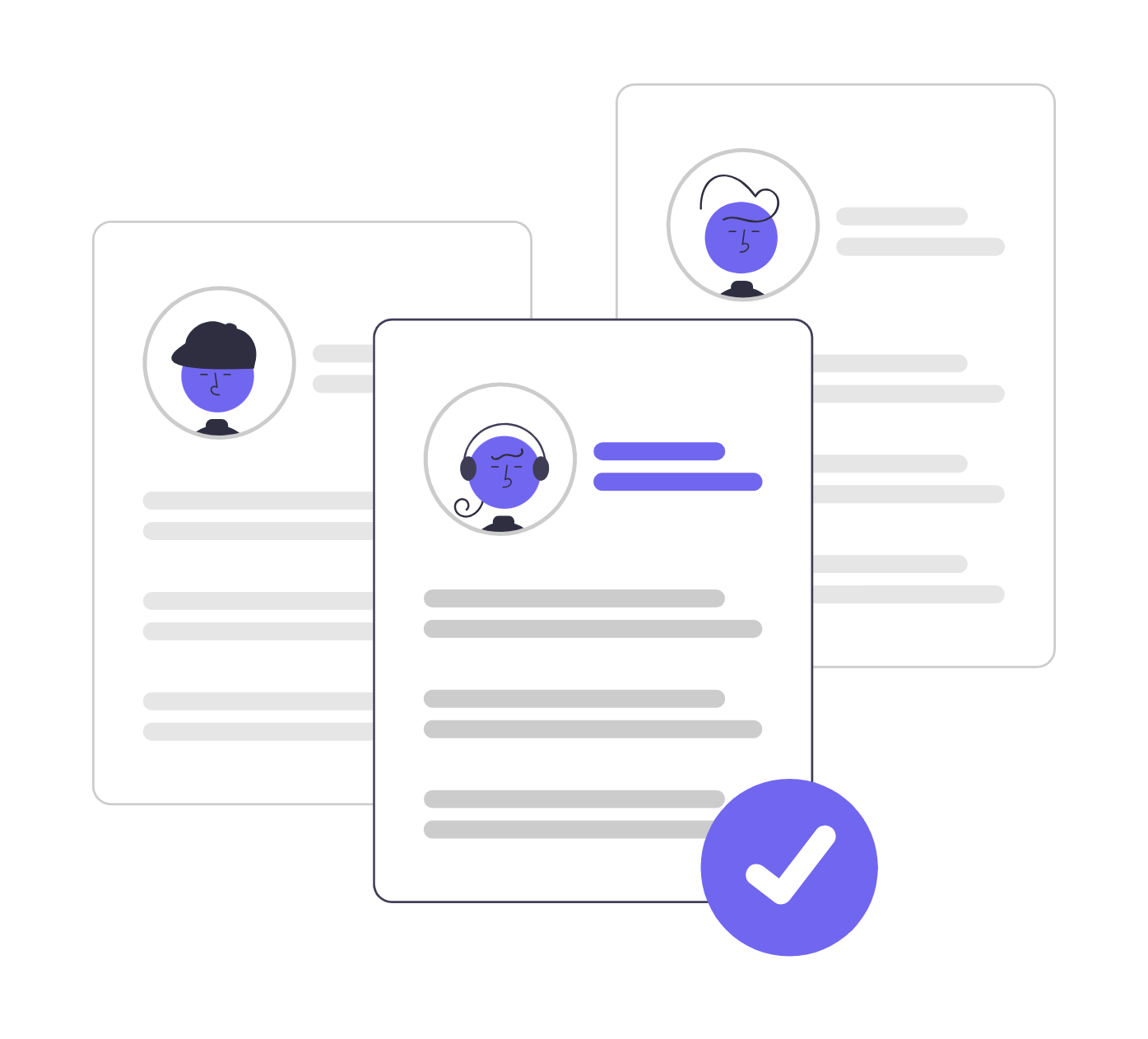Share
Most hiring managers don’t get it wrong on purpose—they get it wrong because the traditional playbook feels safe.
Scan resumes. Shortlist for experience. Hire the one who checks the most boxes. It sounds rational. But when that new hire underdelivers or leaves after six months, the illusion fades.
Hiring for experience isn’t broken—it’s just incomplete.
In a world of constant change, shrinking talent pools, and rising expectations, organizations that thrive are shifting their focus. They’re not just asking, “What has this candidate done?” They’re asking, “What can they become?”
Let’s dig into why hiring for potential is no longer a risky bet—it’s often the smarter one.
1. What Does It Really Mean to “Hire for Potential”?
Hiring for potential means looking beyond the resume and focusing on what a candidate is capable of becoming. It’s about assessing drive, adaptability, learning ability, and cultural contribution—especially when traditional credentials fall short.
This approach often applies when:
- A candidate is shifting industries
- They’re returning from a career break
- They’re early in their career but show strong aptitude
- The role itself is flexible or rapidly evolving
In short, potential-based hiring is a bet on trajectory, not just track record. It doesn’t ignore experience—it simply refuses to let it overshadow promise.
Easily administer one-click skill tests with Workscreen-This way you can assess candidates based on real-world ability—not just credentials like résumés and past experience. This helps you hire more confidently and holistically.

2. Why Experience Can Be a Double-Edged Sword
It’s tempting to equate experience with performance. But that’s a dangerous shortcut.
Here’s why:
- Resumes don’t measure initiative. Someone may have “5 years of product management”—but what did they actually do in that time?
- Google found that experience predicts performance with just 3% accuracy. Skills-based assessments were 10x more predictive.
- Hiring for experience often perpetuates bias. If certain groups are underrepresented in leadership across your industry, hiring only those with prior leadership experience guarantees a less diverse team.
- The Peter Principle is real. Promoting or hiring based solely on experience can push people into roles they’re not suited for—setting them (and their teams) up to fail.
So while experience can be valuable, treating it as the main filter often leads to inflated expectations and missed potential.
3. The Case for Hiring Potential: 7 Strategic Advantages
Hiring for potential isn’t just more inclusive—it’s more strategic. Here’s why top-performing companies increasingly favor this approach:
1. Wider Talent Pool
Opening roles to those with transferable skills or nontraditional backgrounds dramatically expands your hiring reach, especially in a tight labor market.
2. Stronger Team Agility
Potential hires adapt faster, think more flexibly, and are often more receptive to change—ideal traits in fast-moving environments.
3. Higher Retention
Growth-oriented employees stay longer when given opportunities to learn and progress. They’re not just filling a role—they’re building a career.
4. Better Cultural Synergy
Potential-based hiring emphasizes alignment with company values and team dynamics—something resumes rarely reveal.
5. Lower Cost-to-Hire
Less experienced candidates often come with lower salary expectations and shorter notice periods, while offering high upside if supported well.
6. Greater Diversity
By removing rigid credential barriers, you create access for candidates from different educational, cultural, and professional paths.
7. Future-Proofing
Today’s fast learners are tomorrow’s leaders. Potential-based hires are easier to upskill and redeploy as your business evolves.
Workscreen evaluates, scores and ranks applicants on a performance-based leaderboard—making it easy to spot top talent, save time, and make smarter, data-driven hiring decisions

4. When Experience Still Matters (And How to Balance It)
Of course, not every role can be filled by someone who’s “learning on the job.”
Experience is crucial when:
- The role demands deep domain knowledge (e.g., a CFO or principal engineer)
- Mistakes come with high risk (e.g., compliance, cybersecurity, finance)
- There’s no time for training due to team or project urgency
But even in these cases, a hybrid approach works best.
Pro tip: Hire for experience in soft skills (communication, adaptability, leadership), and potential in technical areas—especially those likely to evolve.
You don’t need to choose one or the other. You need a system that values both.
5. Redefining “Qualified”: How to Spot Potential in the Hiring Funnel
So how do you recognize potential when it doesn’t shout from the resume?
Look for:
- Behavioral patterns: Has the candidate overcome steep learning curves before? Do they ask insightful questions? Have they taken initiative in previous roles?
- Soft skills: Grit, humility, curiosity, emotional intelligence—especially relevant for leadership and team dynamics.
- Transferable skills: Project management, critical thinking, creative problem-solving—even if they were learned outside your industry.
Use these tools:
- Skills assessments: Especially ones that blend hard and soft skills.
- Structured interviews: Ask every candidate the same behavioral and situational questions to spot mindset differences.
- Work samples: Evaluate how someone thinks and performs—not just what they’ve done.
6. How Smart Leaders Are Making the Shift
Across Reddit threads and real-world feedback, hiring managers express a recurring regret: hiring “on paper” candidates who lacked drive.
Some of the most successful hires came from “risky” bets on high-motivation, lower-experience candidates who over delivered.
Here’s what stands out:
- Managers who hire for growth potential get more engagement and coachability.
- Teams that embrace potential see greater agility and cohesion.
- Organizations that invest in upskilling keep talent longer and build a stronger internal pipeline.
One Reddit commenter put it best:
“I can train skills. I can’t train attitude.”
Want to find coachable, high-motivation candidates without the guesswork? WorkScreen helps you filter out copy-paste, low quality applicants and quickly identify top talent.

7. Building a Balanced Hiring Strategy: Actionable Steps
To future-proof your team and hire better, integrate potential into your hiring process without sacrificing performance:
- Start with a job task analysis
Identify which tasks require experience and which can be learned. - Use skills-based assessments
Screen candidates based on what they can do, not just what they say they’ve done. - Design structured interviews
Ask for examples that reveal learning ability, resilience, and initiative—not just past titles. - Build internal mobility maps
Track existing team potential for lateral or upward movement. - Use onboarding as a growth accelerator
Treat onboarding as a launchpad, not a formality—especially for hires with high upside.
Final Take: The Future of Hiring Is Growth-First
In a world that’s evolving faster than most job descriptions can keep up, experience alone won’t get you ahead. The best teams hire for capacity, character, and curiosity—because those are the raw materials of growth.
So the next time you’re reviewing resumes, ask yourself:
“Am I hiring for what this person has done—or what they can do next?”
One leads to short-term comfort. The other leads to long-term success.
FAQs
Hiring for potential focuses on qualities like adaptability, curiosity, and learning agility. Hiring for experience emphasizes a candidate’s past roles and demonstrated skills.
When the role is highly technical, client-facing, or requires immediate strategic execution. But even then, experience should be paired with skill validation.
Use soft skill assessments, scenario-based tests, and culture-add evaluations. Tools like WorkScreen.io automate much of this with performance scoring.
Yes—and you should. The best approach is using skills testing to validate ability, while also evaluating mindset, growth capacity, and previous outcomes.

